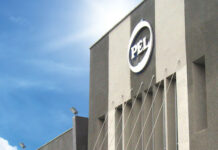At first glance, the cement sector looks like it is struggling. The numbers came in for May, and they were not kind.
Pakistan’s total cement sector registered a decline of 36% year-on-year (YoY), and 25% month-on-month (MoM), mostly due to a standstill in local construction activity due to Covid-19 pandemic (and the expected annual slowdown due to Ramazan).
Domestic cement dispatches fell for the third consecutive month, declining 38% YoY to 2.27 million tonnes against 3.64 million tonnes in May of last year. Similarly, exports declined 25% YoY and 46% MoM mostly due a slowdown in trade through the border with Afghanistan.
And yet, despite the gloomy numbers, most analysts are pretty upbeat about the sector picking up in the future. Even if fiscal year 2020 is expected to show losses, fiscal year 2021, barring any outright surprises, should show improved numbers and better earnings for cement companies.
There are three reasons for this. The first is that the cement sector is helped significantly by lower energy costs, specifically declining reliquefied natural gas (RLNG), coal and furnace oil prices. Second, the interest rate was cut significantly by 625 basis points to 7%.
Third, and most importantly, the federal government announced some incentives for the cement industry in the new budget for fiscal year 2021. Some are a little broad in scope: for instance, Rs69 billion was allocated for dams, Rs30 billion was allocated for the Naya Pakistan Housing Scheme. Additionally, there was an increase in the limit on transactions that do not require recording the buyer’s computerised national identity card (CNIC) number from Rs50,000 to Rs100,000.
Most cement traders who buy from cement manufacturers are informal businesses that are not registered with tax authorities and want to continue evading their taxes. As a result, the government’s effort to move such people into the tax net meant enacting measures like requiring the buyer’s CNIC number, though it appears the government is caving on that demand at least relaxing the limit above which the CNIC numbers need to be recorded by cement manufacturers.
But the one change with the biggest bang was the reduction in the federal excise duty (FED) from Rs2,000 per tonne, to Rs1,750 per tonne. This translates into a cut of Rs12.5 per 50kg cement bag.
“The above measures will well promote a revitalization of construction activities… going forward, we expect demand to pick up once the pandemic is neutralize,” said Yasin Hanif, analyst at Darson Securities in a note issued to clients on June 18.
He further added: “As far as reduction in FED is concerned, we expect North players to absorb completely while south players to partially compensate for the reduction in FED… players especially in the North will have the ability to raise price or reduce dealer discount.”
It may be helpful to unpack these geographical distinctions. A cement company in Pakistan is defined not by its earnings or product variety, but by drawing a horizontal line across a map of the country. Everything above the Sindh-Punjab border is ‘the north’, everything below is ‘the south’. The north comprises 75% of the country’s operational capacity, and has around 14 players: think Dera Ghazi Khan Cement, Fauji, Cherat, Maple Leaf. These export to Afghanistan and India, but most of their earnings come from the local market.
The south comprises 25% of the operational capacity, and has much fewer players: think Lucky, Attock and Thatta. By virtue of being that much closer to Karachi and Gwadar, the southern players’ earnings are driven primarily by exports to places like Bangladesh, Sri Lanka, Oman and South Africa.
Profit takes a look at two northern players, Pioneer Cement and Maple Leaf Cement, to better illustrate the effects of these changes to the cement industry.
Pioneer Cement Limited makes ordinary Portland cement, which is a building material used for concrete. It also provides sulphate resistant cement for use in structures near the sea. The company was incorporated in 1986, and is headquartered in Lahore.
Like the wider industry, Pioneer is not faring well in fiscal year 2020, according to Saad Nandia, an analyst at Akseer Research, in a note issued to clients on June 19. This year dispatches are estimated to decline 1% YoY to 1.44 million tons due to pretty stiff competition locally. Its market share is expected to decline to 4.1% this year, from an average of 4.3% in the last five years.
The combination of a pileup of cement inventory, and and increase in fuel and power costs, mean that the company is estimated to report a loss of Rs3.45 per share this fiscal year.
However, come fiscal year 2020, the company is expected to report earnings of Rs0.17 per share. How did Nandia reach this conclusion? First the cut in FED will help gross margins. Pioneer will also benefit from lower coal prices, which is trading around $55 per tonne, vs the usual average of around $67 per tonne.
The profitability would have been even higher in 2021 ifPioneer had not taken out a long term loan for its new production line, which has a capacity of 10,000 tonnes per day. The plant has started trial production, but will start commercial operations later. The costs is expected to creep up in next year’s income statement.
Next up: Maple Leaf Cement. The company was founded in 1956 and is a subsidiary of Kohinoor Textile Mills. It primarily makes ordinary Portland cement and white cement.
Like Pioneer, it too will report a loss of Rs3.72 this fiscal year, mostly due to higher input costs and financing costs.Gross margins are also expected to settles at 0.8%, down from 18.9% in the previous fiscal year.
But unlike Pioneer, or really, unlike most other northern players, Maple’s dispatches actually gre this year by 37.4% due to its expanded production capacity. During the first nine months of fiscal year 2020, the company registered a growth of 72.8% YoY in its dispatches, against the northern industry growth rate of 10.9% YoY. The company’s market share jumped from 9.5% in last fiscal year, to 14.8% this year.
Looking ahead, the company is expected to report an earnings of Rs1.7 per share in the next fiscal year, again due to lower coal prices and the cut in FED.



















it is a very informative article on cement industry. you are requested to kindly guide me which of cement factories is more suitable for investment point of view if the investment period is for 6 months
Tp of MLCF is Rs. 39, DGKC 105 lucky cement almost. Rs. 600… Make sure to buy in dip. Make your own decision further analysis
How come cement industry earning per share when export to India and Afghanistan has been completely halt.
Cement Pr
Comments are closed.